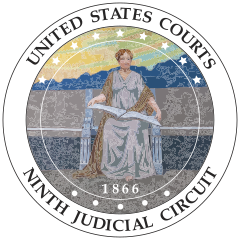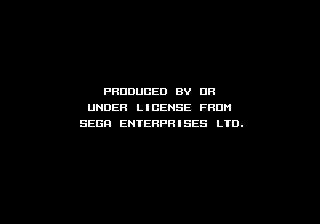Difference between revisions of "Sega v. Accolade"
From Sega Retro
m (testing LawsuitBob) |
m |
||
| Line 1: | Line 1: | ||
| − | |||
{{LawsuitBob | {{LawsuitBob | ||
| image=Courtseal US Appeals9th.svg | | image=Courtseal US Appeals9th.svg | ||
| Line 12: | Line 11: | ||
| laws=15 [[wikipedia:United States Code|U.S.C.]] §§ 1114(1)(a), 1125(a) ([[wikipedia:Lanham Act|Lanham Act]]); 17 U.S.C. §§ 101, 106, 107, 117 ([[wikipedia:Copyright Act of 1976|Copyright Act of 1976]]) | | laws=15 [[wikipedia:United States Code|U.S.C.]] §§ 1114(1)(a), 1125(a) ([[wikipedia:Lanham Act|Lanham Act]]); 17 U.S.C. §§ 101, 106, 107, 117 ([[wikipedia:Copyright Act of 1976|Copyright Act of 1976]]) | ||
}} | }} | ||
| − | '''''Sega Enterprises Ltd. v. Accolade, Inc.''''', 977 F.2d 1510 (9th Cir. 1992), is a 1992 case in which the United States Court of Appeals for the Ninth Circuit applied American intellectual property law to the reverse engineering of computer software. [[Sega Enterprises, Ltd.]] filed a lawsuit against [[Accolade|Accolade, Inc.]] on October 31, 1991{{fileref|CGW US 096.pdf|page=20}} after Accolade manufactured games for the [[Sega Mega Drive]] without a license by reverse-engineering Sega's [[TradeMark Security System]]. Sega lost the court case, and the verdict set a precedent that copyrights do not extend to non-expressive content in software if it is required by another system to be present in order for that system to run the software. | + | {{stub}}'''''Sega Enterprises Ltd. v. Accolade, Inc.''''', 977 F.2d 1510 (9th Cir. 1992), is a 1992 case in which the United States Court of Appeals for the Ninth Circuit applied American intellectual property law to the reverse engineering of computer software. [[Sega Enterprises, Ltd.]] filed a lawsuit against [[Accolade|Accolade, Inc.]] on October 31, 1991{{fileref|CGW US 096.pdf|page=20}} after Accolade manufactured games for the [[Sega Mega Drive]] without a license by reverse-engineering Sega's [[TradeMark Security System]]. Sega lost the court case, and the verdict set a precedent that copyrights do not extend to non-expressive content in software if it is required by another system to be present in order for that system to run the software. |
==History== | ==History== | ||
Revision as of 01:35, 12 November 2023

|
| Sega Enterprises Ltd. vs Accolade, Inc. |
|---|
| Court: United States Court of Appeals for the Ninth Circuit |
| Argued: July 20, 1992 |
| Decided: October 20, 1992 |
| Citation(s): 977 F.2d 1510 (9th Cir. 1992) |
| Judge(s) sitting: Stephen Reinhardt, William C. Canby, Jr., Edward Leavy |
| Case opinions: Stephen Reinhardt (majority) |
| Laws applied: 15 U.S.C. §§ 1114(1)(a), 1125(a) (Lanham Act); 17 U.S.C. §§ 101, 106, 107, 117 (Copyright Act of 1976) |
| Holding |
| Accolade's acts of reverse engineering Sega Genesis software to learn about its security systems and subsequent publishing of unlicensed Sega Genesis games are protected under the fair use doctrine of copyright law. Sega is held responsible for using its security system to place its trademark on Accolade's games. |
This short article is in need of work. You can help Sega Retro by adding to it.
Sega Enterprises Ltd. v. Accolade, Inc., 977 F.2d 1510 (9th Cir. 1992), is a 1992 case in which the United States Court of Appeals for the Ninth Circuit applied American intellectual property law to the reverse engineering of computer software. Sega Enterprises, Ltd. filed a lawsuit against Accolade, Inc. on October 31, 1991[1] after Accolade manufactured games for the Sega Mega Drive without a license by reverse-engineering Sega's TradeMark Security System. Sega lost the court case, and the verdict set a precedent that copyrights do not extend to non-expressive content in software if it is required by another system to be present in order for that system to run the software.
Contents
History
The case in question stems from the nature of the console video game market. Hardware companies spend great money on R&D and manufacturing, often selling game consoles at a loss. Thus, they must rely on other revenue streams such as peripheral sales and game licensing. Sega was attempting to "lock out" game companies from making Mega Drive games unless they paid Sega a fee, ostensibly to maintain a consistent level of quality of games for their system, enforced by the TradeMark Security System.
This strategy was originally invented by Nintendo when they launched the Nintendo Entertainment System in North America. It was one of several precautions Nintendo took in an attempt to prevent something like the video game crash of 1983 from happening again. Before the crash, there were no such restrictions, so companies could develop and publish software for any system on the market with or without permission.
This led to a market which was oversaturated with titles, with expensive blockbuster games being drowned in hoards of poorly programmed ones. Rival companies were able to release flawed software on their competitors' systems, giving the impression that one console was "worse" than another. It also meant there was a distinct lack of quality control, with violent or sexual games potentially being available to children.
Nintendo created the "Nintendo Seal of Quality", to assure consumers that software was above a certain quality standard. Sega would continue this policy with their Sega Seal of Quality, which signified a game that would pass the TMSS check. The strategy was the same: make the hardware reject any cartridge that did not include a Sega trademark. Plus, if an unlicensed company included this trademark in their game, Sega could sue the company for trademark infringement.
Results
Sega won an initial injunction, forcing Accolade to remove all Mega Drive products from store shelves. However this was short lived, as Accolade won on appeal. The two companies reached an out of court settlement which allowed Accolade to continue building their own Mega Drive cartridges, but as an official licensee. Though Sega lost this lawsuit, the idea still makes sense for hardware manufacturers. All future game consoles from any manufacturer--Sega, Sony, Nintendo, and Microsoft--carry a similar mechanism.
